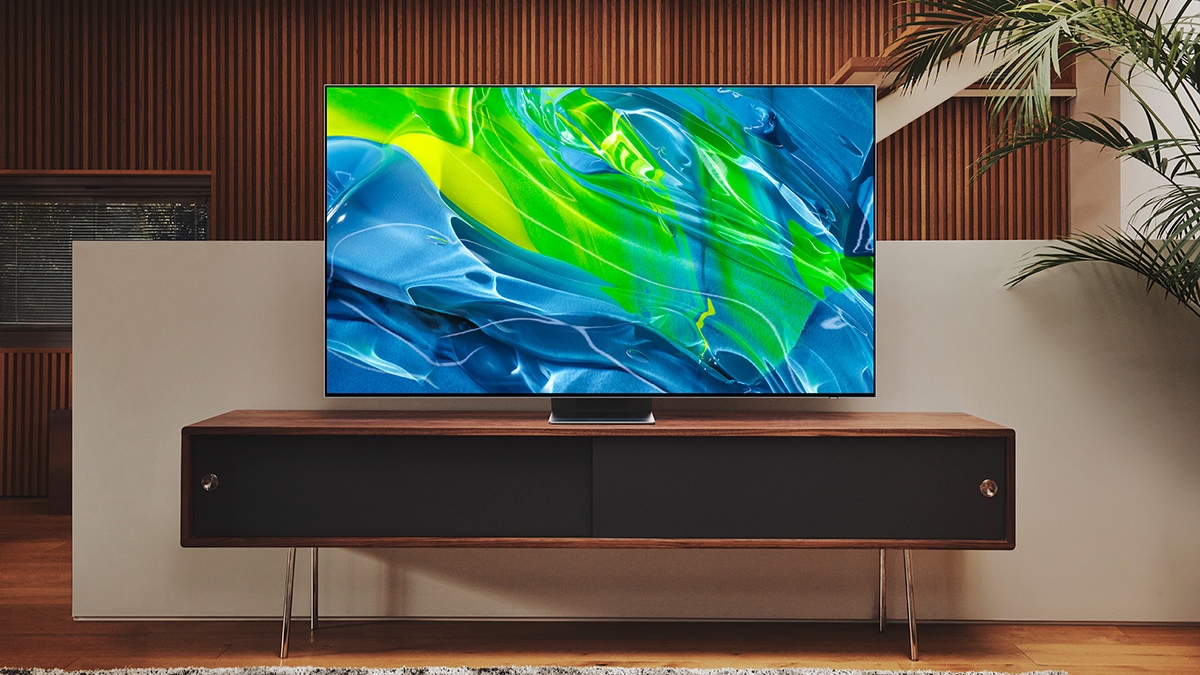Samsung QD-OLED vs Neo QLED 4K TV: Worth the extra money?

There’s a persistent myth surrounding video and audio gear that the more you pay, the better the performance you can expect. And while that can sometimes turn out to be the case, it’s not universally true, especially when it comes to the best 4K TVs.
OLED TVs have a well-deserved reputation for providing fantastic all-around picture quality. Even the earliest OLED models stunned viewers with their impeccable black levels and ability to deliver uniform contrast and color even at off-center seats. The biggest drawback to OLED from the get-go was maximum light output – a factor that has been addressed in the latest models like LG’s OLED65G2 with its next-gen ‘Evo’ panel. While the new G2 can’t hit the brightness heights of top 4K LED models, it does reach up to the 1,000 nits range (in Vivid mode), making it a proper match for the majority of high dynamic range-enhanced programs.
QD-OLED vs. Regular OLED
Samsung has thrown its hat into the OLED ring for 2022 with the new S95B QD-OLED 4K TV. QD-OLED represents an interesting advancement over the previous technology in that a quantum dot layer is incorporated into the OLED panel – the OLED pixels produce blue light, and that is used to generate red and green light from the quantum dot layer to produce full-color images.
Regular WOLED (white OLED) panels like those used in LG and Sony OLEDs, in contrast, generate white light and use filters to create full-color images. The Samsung QD-OLED model’s omission of those filters is one factor contributing to both its enhanced brightness and its well-saturated color when viewed at both on-axis and extreme off-axis viewing positions.
TechRadar recently had an opportunity to visit Samsung’s TV testing facility in New Jersey where we got ample hands-on time with the S95B and the company’s new QN90B Neo QLED LCD model. While I spent the bulk of my time there checking out both the QN90B and The Frame TVs (a full TechRadar test of the S95B by a different reviewer is forthcoming), I did make a point of carefully evaluating the S95B’s black level and off-axis performance.

Looking at it, there was no doubt that the S95B could display a deep, satisfying black, and both its brightness and contrast were impressive even with the room’s overhead lights on. But even in Filmmaker mode, above-black detail was obscured in the test patterns I viewed, and the same was the case in Movie mode.
Using a different set of test patterns to check off-axis color saturation, the Q95B fully met expectations, even at the extreme angles that viewers typically wouldn’t bother with. This is impressive stuff, and it does demonstrate an advantage over regular OLED, though not one that would dramatically change the game.
Sign up for breaking news, reviews, opinion, top tech deals, and more.
QD-OLED vs. Neo QLED
How did the QN90B compare to its QD-OLED stablemate? As I noted in my hands-on report, Samsung’s Neo QLED model proved similarly capable of displaying deep blacks, and I was able to make it display a good amount of shadow detail in movies after a series of adjustments. Also, any ‘blooming’ artifacts from its Mini-LED-driven full array local dimming backlight appeared minimal.
The QN90B’s Ultra Viewing Angle feature also meant that images retained strong contrast and color saturation at off-center seats, while its anti-glare screen mostly eliminated distracting reflections from overhead room lights. Did its off-axis performance equal that of the S95B? No – the performance of Samsung’s QD-OLED (and also that of the Sony QD-OLED that I witnessed in a demonstration back in March) on this parameter is unmatched. But when you consider that a 30-degree viewing arc is sufficient for a typical two-viewer sofa seating arrangement, the QN90B’s near-90-degree viewing arc should be quite enough.
Samsung’s new QN90B Neo QLED 4K TV and its S95B QD-OLED are both intriguing high-end TV offerings, and I’m sure most people would be happy to own either one. But with the QN90B priced $400 less than the S95B with only minimal truly meaningful performance differences, you just might want to go for the less expensive option. Unless you insist on owning only the newest and coolest cutting-edge tech, in which case you’ll want QD-OLED.

Al Griffin has been writing about and reviewing A/V tech since the days LaserDiscs roamed the earth, and was previously the editor of Sound & Vision magazine.
When not reviewing the latest and greatest gear or watching movies at home, he can usually be found out and about on a bike.